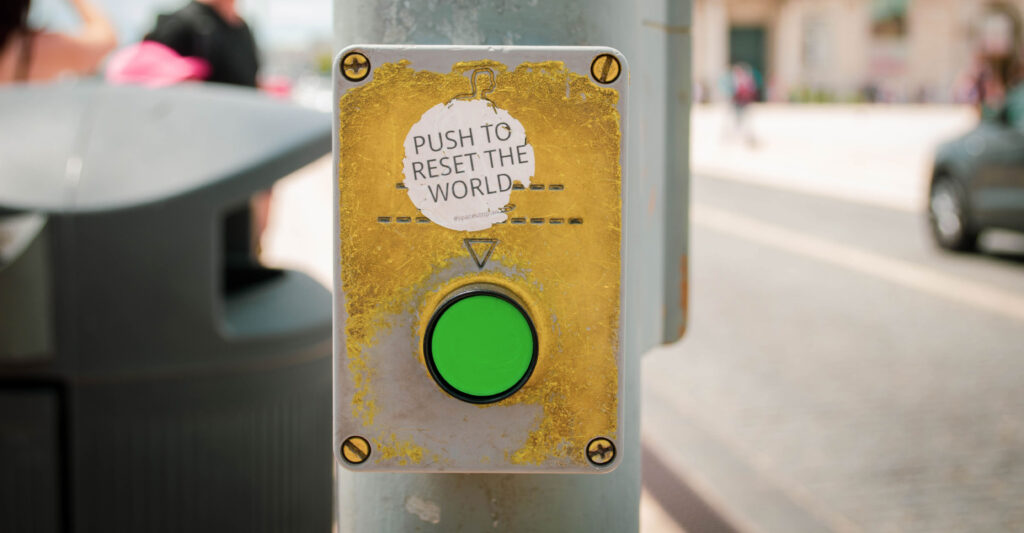
I joined Salesforce as Global Innovation Evangelist just as the global pandemic was soaring. The world was unified in its sudden devastation and its urgency to respond to COVID-19 across multiple, critical fronts. As the innovation “evangelist” for one of the most innovative companies in the world, during a worldwide disruptive event, my work seemed inconsequential. It’s been said to never let a crisis go to waste. The only way forward was to start anew.
My most pressing agenda was to dive in and study disruption and its impact on markets and behaviors. I interviewed Salesforce customers, met with leaders within the organization on the front lines of helping businesses respond to the new and evolving needs of employees and their customers. I also learned directly from individuals to understand how disruption was affecting them and how their necessities and actions were shifting and developing.
Staring reality straight on has a way of inspiring change and accelerating more empathetic perspectives. I learned that we are facing anything but a “New Normal”. In actuality, we are currently facing an “Interim Normal”, a one-in-a-lifetime moment to rethink our way forward (or backward). It’s a consequential point in time where we can achieve a great reset. Or, we snap back to a world that was riddled with problems overdue in their confrontation and resolution. It’s a choice for a new beginning or a return to the past.
Personally, I believe we aren’t going through all of this disruption just to become what we were before. These times are anything but the ‘new normal.’ This isn’t a race toward normalcy or the status quo. It’s a moment of transition, and reflection, to build the future we’ve always dreamed about.

As I was starting to assemble my findings, I shared them with colleague and dear friend, Vala Afshar. He invited me to share my work in his popular column at ZDNet. I wanted to share our conversation (the first of two) here with you. Please let me know if it helps you.
Get ready for the ‘Novel Economy’ and recovering from COVID-19 fallout
Brian Solis outlines the state of innovation and his working theory of what’s ahead for the novel economy.
Brian has been one of the industry’s most influential voices when it comes to humanizing disruptive technology trends. For over 20 years, he has served as a leading analyst, speaker, and author helping to make sense of disruption and guide leaders in their innovation and transformation strategies.
Brian and I met over 10 years ago during the early days of social media and the rise of Web 2.0. Brian recently joined Salesforce as a global innovation evangelist and I couldn’t be more thrilled to work with him. I connected with Solis to learn more about his work and goals moving forward. More importantly, I wanted to get his take on these uncharted times and share with you his vision to navigate the present and the future.
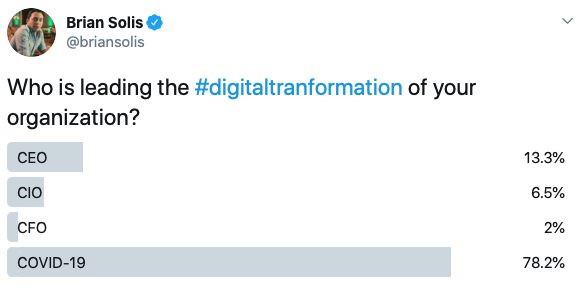
WHAT IS THE IMPORTANCE OF HUMAN DYNAMICS AND INNOVATION?
Solis: Innovation isn’t just about technology. It’s about inventing or creating new value. Many legacy organizations are stuck in modes of iteration, using new technologies to improve existing processes and systems. They’re both important, but in these obscure times, iteration ensures and improves business continuity. Innovation across multiple fronts creates opportunities for competitive advantages. As a digital anthropologist, I set out to understand the human dynamics of innovation and transformation. For example, my latest research explored the impact of digital lifestyles on creativity, productivity, and our overall well being. Together, everything made so much more sense. The result was my latest book, Lifescale: How to Live a More Creative, Productive and Happy Life.
HOW DO WE ENGAGE IN WHAT YOU CALL THE NOVEL ECONOMY?
Solis: I want to be sensitive here. I too don’t know what I don’t know. I haven’t yet written a post-pandemic playbook yet, although our good friend Ray Wang and the team at Constellation Research recently published one. It’s important to note that while we’re in the throes of responding to the biggest disruption in modern history, we also need to develop sweeping contingency plans for future disruptions.
To help, I’m spending time with stakeholders, experts, and also observing behaviors (leadership, customers, employees). What’s consistent across the board is a belief that we are shifting from business as usual to a new normal.
We are entering what I refer to as a #NovelEconomy. Novel means new and unusual and that accurately describes these times. In a business sense, Novel represents a new strain of market conditions that are not fully identified or understood. Thus, we have no pre-existing defenses or experience against this level of astonishing disruption. We were all simultaneously thrust into a melee of panic, fear, confusion, and disorder. There’s really no widespread expertise, playbooks, or best practices to guide us. Nor, is there a preventative business vaccine to protect us from this or future disruption…yet. But truth be told, we don’t really want to respond with preexisting roadmaps or checklists. Herein lies the opportunity.
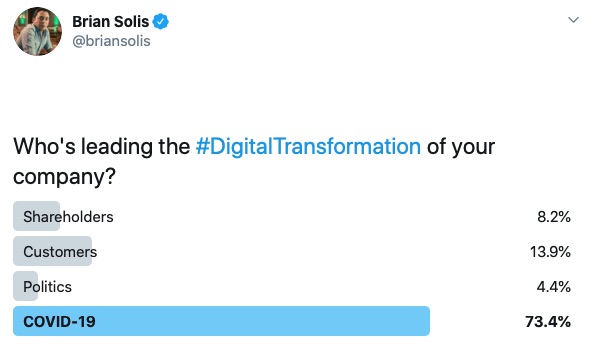
DO THE SIX STAGES OF DIGITAL TRANSFORMATION STILL REMAIN AS GUIDING PRINCIPLES FOR TRANSFORMATION?
Solis: There are parallels yes in terms of the maturity model. The aim is to become an innovative, adaptive, and resilient (digital-first) company. The blunt of the impact and the speed of and extent to which everything has to move now is extraordinary.
Crises awakened the sense of urgency for change and the need for digitization. It’s also opening minds, breaking down walls, and resetting priorities. My work will focus on developing a new playbook for mitigating, automating, and innovating in the Novel Economy. In the interim, I see the immediate future in three phases.
Rather than share a generic “Top XX List” of what stakeholders should do in their digital transformation strategy, let’s explore the “Three Phases of the Novel Economy” aka the next normal. Let’s also explore potential scenarios in each phase to help stakeholders take action now and over the immediate horizon. Survive. Alive. Thrive.

Phase 1: Survive – Reaction to Crisis
Organizations are establishing a COVID-19 task force and launching a mitigation war room to assess what’s not working, what needs to get done, and where to reset priorities. Speed is the relevant currency. Here, stakeholders can only talk about what can happen in days or weeks at most.
Investments in tech and resources are focused on triage and mitigation. There’s large scale scrambling to fix what’s broken, develop apps, workflows, and models to address unforeseen issues and opportunities. Automation is accelerated, especially in service with chatbots or conversational AI, to manage the incredible influx of inbound and outbound engagement.
The best response initially, is tempered one. To help stakeholders operationalize quickly and effectively, think of these steps as, the “5C’s of Stabilization and Rapid Transformation”…
- Establish confidence
- Practice compassion
- Understand customer context, specifically in each moment, as it evolves
- Serve content and offers that are native, personalized, relevant and empathetic to their intention and desired outcome
- Prioritize digital and mobile native experiences at every step of the way
There’s no going back to the world we once knew, the only way to get to the next normal is by plowing straight through disruption.
Phase 2: Alive – Build, Secure, and Operationalize for Transition State
In phase 2, leadership accepts that disruption is the new normal and is the foundation on which to build upon. Beyond technology, leaders work to help people cope with finding comfort in evolving discomfort zones. If it wasn’t obvious before, becoming a digital-first business is the way forward. Here, business continuity is reflective of the new normal and becomes operationalized.
We shift from shock-based response to short-term strategy and action. What separates the states is intent, purpose, and scope. Organizations will prioritize support for the most immediate investments to fix the broader issues coming to light in phase one (cracks or outright gaps in digital transformation plans and initiatives). At the same time, stakeholders are working on securing systems, new work environments, and infrastructure to support dynamic operational environments.
Before organizations can build an agile, disruption-proof operational model, stakeholders have to plan for short-term business continuity (spanning the next one-to-two years). A transition roadmap is developed that shifts from shock mode to shorter-term priorities and longer-term needs.
- Leadership: Being forced to take sudden critical action is rarely positive or productive. Disruption in one way shape or form is a permanent threat. If management is not leading, then employees and partners lose confidence. Leaders must focus resources on not only mitigation but also articulate a path toward innovation. Trust is paramount and employees, customers, and partners must align around a renewed organizational vision and mission.
- Digitization: Digital transformation becomes intentional and focused. Bureaucracy crumbles. The cross-functional war room shifts from mitigation to enterprise-wide digitization, becoming a cross-functional steering committee.
- Cloud: Cloud computing is taking the spotlight as remote working, e-commerce/mobile commerce, and virtual meetings and events skyrocket, stress-testing cloud infrastructure in real-time. Becoming a digital-first business requires organizations to migrate key systems to hyper-scalable cloud platforms.
- Digital-First CX and EX: The more time customers and employees spend working and shopping from home, the greater the shifts in decision-making, behaviors, and values. Previous experience standards and data are no longer in alignment with new activities as they evolve into routines. Additionally, we’re shifting from studying work/life balance to work/life blending. In Phase 2 CX, digital-first touchpoints in marketing, sales, and service are supported by native platforms, processes, and experiences. Digital EX also becomes a primary focus to support native digital and remote workplace systems, processes, and engagement. Data-driven empathy is essential for personalization across customer and employee journeys.
- Security: Cyber security is heightened as critical functions of a digital-first business introduce vulnerabilities. Privacy, phishing, DDoS (distributed denial of service) attacks, mal-spam, ransomware, etc. requires increased security efforts.
- Supply Chain and Logistics: Now, companies must rethink and transform the global supply chain and logistics models. Exposed vulnerabilities are the result of decades-long focus on supply chain scale and efficiencies to minimize costs, much like service centers.
- Data-Driven: Data is recognized as an essential asset rather than a byproduct of disparate business processes. Data-driven cultures take shape to zero-in on customer truth. As a result, data silos are eliminated, data is consolidated, access and data literacy are democratized, analytics and insights become a service and fuel organizational stabilization and transformation. Additionally, data becomes visualized, sourced from disparate sources, with AI adding immediate, approachable insights that guide analytics, decision making, and incremental disruption-proofing.
- AI-Driven: Automation programs continue to accelerate across the enterprise, most notably in service, but now also include integrated CRM, marketing, sales, and commerce. AI-powered self-service knowledge bases, chatbots, apps, real-time and predictive analytics, will help free up critical human capital to focus on transformation and innovation initiatives.
- Organization and Workforce Modernization: Employee experience and engagement require an entirely human-centered and empathetic approach in a Novel Economy, like all P2P initiatives. Policies will need updating for new remote workforces and social distance-compliant office workplaces, and travel protocol. Employees will also require training on new policies and also new workflows and systems.
- Mental and Physical Well-Being: Disruption affects people at every level, not just during initial shock, but also over time as distancing, unfamiliar territory and isolation sink in. The event itself already has burned into the subconscious as a somatic marker. Add to that new stresses of everyday life and work at home, fear of disease, heightened uncertainty, and also economic woes, employees will need coaching to guide and therapy to help adjust, cope, and ultimately flourish in this next normal.
Phase 3: Thrive – Next Normal Business Continuity, Disruption Proofing, and Innovating Forward
In this phase, society at large is adjusting to life with the still active presence of COVID-19 (12-36 months post wave 1 disruption). New tests and treatments are abound. We are either on the cusp of or post vaccine. Next normal is… close to or in the process of normalizing.
In Phase 3, organizations reacting to and building infrastructure for the Novel Economy is the new status quo. Emphasis from here on out is 1) expanding digital business capacity and expertise, 2) fueling the organization’s innovation engine for growth (operational, product, and services) 3) expanding the role of AI and automation across the enterprise to improve capacity, and 4) resilience for long-term disruption-proofing.
- Culture of Innovation: Cultures of innovation are foundational to thriving in a Novel Economy or any economy. Companies with a high purpose culture are more innovative and create trust in leadership and alignment across the workforce. Innovation is not a function of check-boxes to be more innovative. Innovation is the result of a clearly articulated vision and belief system (a future motivating state), supported by the socialized norms and values that fortify new behaviors.
- Customer and Employee Truth: Working toward understanding customer 360 truth (and employee truth) leads to digital-first innovation that humanizes customer and employee journeys, at every touch point, across functions. Data becomes a great centralizer to allow for next normal customer behaviors, preferences and intent to become visible across the customer journey and life-cycle.
- Real-time and Predictive Analytics: Previous datasets don’t necessarily apply to new behaviors. Studying new behaviors in real-time as they unfold in the Novel Economy helps organizations grasp new trends as they evolve to deliver relevant engagement, next best actions, and desired outcomes in real-time. With AI, these trends become predictable to help innovative companies predict needs and trends to develop and deliver personalized experiences ahead of time.
- Cognitive Automation: Automation extends (and matures) from marketing, sales and service, to now include experience design, product development, supply chain and logistics, adding a new dimension to digital transformation. Disparate CRM and ERP systems and data are cleaned and consolidated. New systems and apps introduce cognitive capabilities across middle and back office systems including, human resources, pricing, inventory, delivery, manufacturing, and financial management.
- Re-skill and up-skill: Even before disruption, a massive skills gap was only continuing to grow. As innovation initiatives and automation becomes pervasive and new systems are deployed, everything requires training, reskilling, and also upskilling. With innovation and automation comes the need for new (and creative) thinking, processes, and capabilities. We shift from people doing the work to systems doing the work as directed by people. With education disrupted, we can expect modern training and skilling to become attached to individuals digitally, think blockchain-powered badges or living certificates/degrees.
- Dynamic Experience Design: The “Customer’s Experience” is paramount as they’re in control of their experiences and those experiences are constantly in flux as virtual and blended times, trends, tastes dictate. Human-Centered Design (HCD) and Cognitive Experience Design or AIX assesses collective and individual preferences and desired outcomes to deliver intuitive, productive, and dynamic experiences in real-time. Whether it’s voice, contactless interfaces and transactions, AR/VR, gesture-based, mobile, modern physical (BOPIS, delivery, subscription, cashierless) or click-based, the experience is dynamic and personal.
- Digital Twins: Highly complex virtual models of real world counterparts will help organizations accelerate modeling in a variety of mission-critical scenarios. Progressive organizations are already using IoT sensors embedded in factory machines to feed operational data into AI applications to simulate supply chain performance. With social distancing measures in place for the near future, digital twins will help organizations and partners in applications such as construction, healthcare, engineering, logistics, public policy, environment, among many others.
- Blockchain and Distributed Ledgers: Supply chains will naturally benefit by creating a single, transparent verified receipt or truth at every step of distribution. Distributed ledgers will also be crucial to vertical innovation including financial, healthcare, manufacturing, shipping, insurance, real estate, energy, taxes, elections (hopefully sooner than later), education, and the list goes on. Innovative pilots are also underway in a variety of disruption-inspired applications. For example, technologists are building a blockchain-based “Immunity Passport” on the self-sovereign identity (SSI) to stop the spread of COVID-19.
- Robotics: Smart robots were already starting to appear in niche manufacturing, inventory, logistics, retail, security and healthcare applications. In a world of social distancing, expect to see the deployment of robots accelerate in existing applications as well as futuristic scenarios including autonomous service and delivery, cleaning (hazards, disinfection), drone delivery and surveillance, testing, and even robot pals to address loneliness.
- Resilience: Resilience, the ability to recover from or adjust to change, is now a characteristic of companies who will thrive in a Novel Economy. It took a global disruption to jump-start the world’s innovation engine. Disruption is not a one-time event. Whether it’s a competitor, a startup, or force majeure, disruption is expected…advanced organizations are planning for it. Resilience is a key pillar in the culture of innovation, it becomes part of leadership vision, culture, and organizational DNA.
This list of trends in each phase isn’t exhaustive. Each phase represents the beginning the next normal defining the Novel Economy.
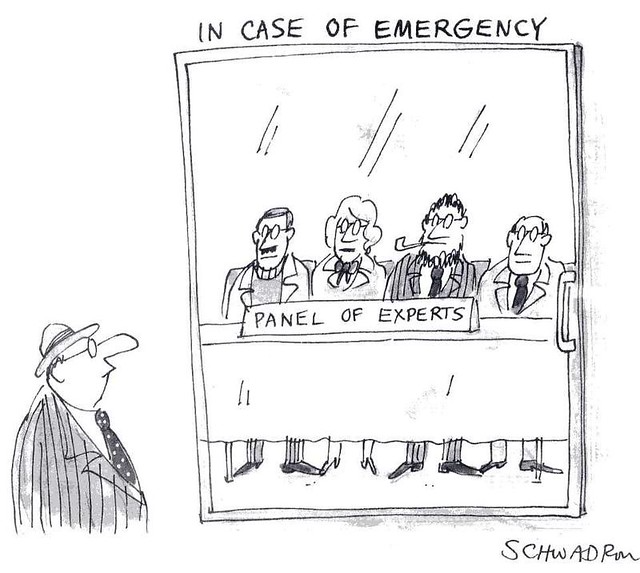
Novel Economy and adopting a successful mindset
These phases serve as an important blueprint to help stakeholders navigate the next economy. It looks like we have the workings of a playbook right here. Disruption has indeed changed the trajectory and adoption of many now important technologies. I recently examined some of the more important trends here at ZDNet. I agree with Solis that these times need leadership and that leadership can and should rise from anywhere by anyone.
“Deepak Chopra refers to significant life-changing events as a ‘fertile void of uncertainty.’ In Stoic Philosophy, they believe that we don’t control and cannot rely on external events. But we can control our mind, how we think and choose our responses, which then guides our resulting behaviors. Our challenge and the gift before us is that we’re looking at a blank canvas for what lies ahead,” Solis said.

Brian Solis | Author, Keynote Speaker, Futurist
Brian Solis is world-renowned digital analyst, anthropologist and futurist. He is also a sought-after keynote speaker and an 8x best-selling author. In his new book, Lifescale: How to live a more creative, productive and happy life, Brian tackles the struggles of living in a world rife with constant digital distractions. His previous books, X: The Experience When Business Meets Design and What’s the Future of Business explore the future of customer and user experience design and modernizing customer engagement in the four moments of truth.
Invite him to speak at your next event or bring him in to your organization to inspire colleagues, executives and boards of directors.
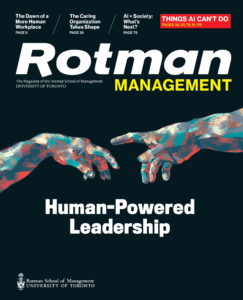

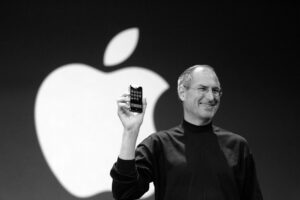


Leave a Reply